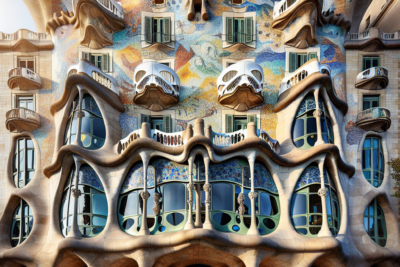
- The Historical Context of La Sagrada Familia's Construction Delays
- Understanding the Architectural Challenges Behind La Sagrada Familia
- The Role of Antoni Gaudí in the Ongoing Development of La Sagrada Familia
- Cultural Significance of La Sagrada Familia and Its Impact on Barcelona
- Future Prospects: When Will La Sagrada Familia Be Completed?
- Tourist Experience: What to Expect While Visiting La Sagrada Familia
La Sagrada Familia, the iconic basilica designed by Antoni Gaudí, has captivated visitors for over a century with its stunning architecture and intricate details. However, the long-awaited completion of this masterpiece has become a subject of intrigue and speculation, prompting discussions about the factors that contribute to its prolonged construction timeline.
In this article, we will explore the complexities surrounding the project's delays, including financial challenges, architectural innovations, and the impact of modern construction methods. Join us as we delve into The Enigmatic Delay: Unveiling the Mystery Behind La Sagrada Familia's Long Awaited Completion in Barcelona, shedding light on the reasons behind this architectural marvel's extended journey towards completion.
The Historical Context of La Sagrada Familia's Construction Delays
The construction of La Sagrada Familia has been shaped by a complex historical backdrop, influencing its prolonged timeline. Initiated in 1882, the project faced significant interruptions due to various factors, particularly the tumultuous political landscape of Spain. The Spanish Civil War (1936-1939) notably halted progress, as the war diverted resources and focus away from artistic endeavors, leaving Gaudí's vision in jeopardy.
Furthermore, the shift in architectural styles over the decades presented challenges in maintaining Gaudí's original design intentions. As societal tastes evolved, so did the methods of construction. This led to a divergence in techniques, resulting in both innovative solutions and complications in realizing the basilica’s intricate details. Key factors contributing to these delays include:
- Funding Issues: Reliance on donations has made financial stability precarious.
- Technological Advancements: Adapting to new methods while respecting Gaudí's original vision.
- World Events: Wars and economic downturns have directly impacted construction timelines.
In addition to these factors, the overall **architectural complexity** of La Sagrada Familia has necessitated meticulous craftsmanship, leading to further delays. A comparative analysis of other major constructions highlights the unique challenges faced by this iconic basilica:
| Building | Construction Duration | Key Delays |
|---|---|---|
| La Sagrada Familia | 1882 - Present | Wars, funding, design adaptations |
| Cologne Cathedral | 1248 - 1880 | Political strife, funding |
| St. Peter's Basilica | 1506 - 1626 | Political, financial, architectural shifts |
Through understanding these historical contexts, we can appreciate the intricate journey of La Sagrada Familia, a testament to both its visionary architect and the myriad challenges faced over the years.
Understanding the Architectural Challenges Behind La Sagrada Familia
Understanding the architectural challenges behind La Sagrada Familia involves recognizing not only Gaudí's unique vision but also the intricate design elements that contribute to its complexity. This basilica is characterized by its organic shapes, elaborate facades, and the innovative use of light, which demand exceptional engineering solutions. The project requires a detailed geometrical understanding to ensure that every element aligns with Gaudí's original intentions, complicating construction efforts.
Additionally, the use of modern materials and techniques has introduced another layer of complexity. To achieve Gaudí's intricate designs, advanced technology such as computer-aided design (CAD) and 3D printing has been essential. However, integrating these modern tools with traditional craftsmanship remains a challenge, as artisans strive to replicate Gaudí's meticulous details without compromising authenticity.
Moreover, the environmental conditions in Barcelona play a crucial role in the construction process. Factors such as humidity, temperature fluctuations, and the coastal climate can affect both the materials used and the construction timeline. The need for constant adjustments and adaptations to these conditions further complicates the project, making the completion of La Sagrada Familia a formidable task.
Lastly, the collaborative nature of the project adds another layer of difficulty. With a diverse team of architects, engineers, and artisans working together, communication and coordination are vital. This collaborative effort, while beneficial in many aspects, can also lead to misunderstandings and delays, particularly when aligning everyone's vision with Gaudí's original masterpiece. As a result, the architectural challenges faced by La Sagrada Familia contribute significantly to its prolonged construction timeline.
The Role of Antoni Gaudí in the Ongoing Development of La Sagrada Familia
Antoni Gaudí, the visionary behind La Sagrada Familia, significantly influenced its ongoing development through his innovative architectural concepts. His unique approach combined Gothic and Art Nouveau styles, resulting in a structure that transcends traditional religious architecture. Gaudí’s meticulous attention to detail and commitment to organic forms are evident in every aspect of the basilica, making it a true reflection of his artistic genius.
One of Gaudí's key contributions was his pioneering use of geometry and nature-inspired design. By implementing intricate forms and structures, he sought to create a building that harmonized with its environment. His vision included:
- Organic Shapes: Inspired by natural forms, enhancing aesthetic appeal.
- Light Utilization: Strategic use of light to create spiritual and uplifting spaces.
- Sustainable Materials: Incorporation of local materials that align with the structure's organic design.
Despite Gaudí's tragic death in 1926, his legacy continues to guide the project. The architects and artisans involved in the ongoing construction remain deeply influenced by his principles, striving to remain faithful to his original designs. This continuity of vision is crucial in navigating the challenges posed by modern construction techniques and evolving architectural standards.
Gaudí also emphasized the importance of craftsmanship, which remains a cornerstone of La Sagrada Familia's development. The integration of traditional craftsmanship with contemporary methods is essential for realizing his intricate designs. This collaborative effort is reflected in the ongoing training and mentorship of artisans, ensuring that Gaudí’s vision is preserved for future generations.
Cultural Significance of La Sagrada Familia and Its Impact on Barcelona
La Sagrada Familia holds immense cultural significance for Barcelona, serving as a symbol of the city's unique architectural identity. As one of the most visited monuments in Spain, it draws millions of tourists each year, contributing significantly to the local economy. The basilica's distinctive style, which blends Gothic and Art Nouveau elements, reflects Barcelona's rich history and artistic heritage, making it an integral part of the city’s cultural landscape.
The impact of La Sagrada Familia extends beyond mere aesthetics; it has become a focal point for community engagement and pride. Locals frequently participate in events and celebrations held in its vicinity, creating a sense of ownership and connection to this architectural marvel. Furthermore, it serves as a site for spiritual reflection, attracting visitors seeking solace and inspiration, thus reinforcing its role as a cultural and spiritual haven in the heart of Barcelona.
Moreover, the ongoing construction and eventual completion of La Sagrada Familia symbolizes resilience and dedication, resonating deeply with the people of Barcelona. The project has become a testament to the city's ability to unite in the face of challenges, fostering a sense of collective purpose. The anticipation surrounding its completion has sparked dialogues about architectural preservation and innovation, ensuring that the legacy of Antoni Gaudí continues to inspire future generations.
In summary, La Sagrada Familia is not merely an architectural masterpiece; it embodies the spirit of Barcelona and its inhabitants. By bridging the past with the present, it invites both locals and visitors to engage with its story, further enriching the cultural tapestry of this vibrant city. Its enduring presence highlights the profound influence of art and architecture on societal identity and community cohesion.
Future Prospects: When Will La Sagrada Familia Be Completed?
The future prospects for the completion of La Sagrada Familia remain a topic of widespread interest, particularly as the anticipated date approaches. Originally projected for completion in 2026 to coincide with the centenary of Antoni Gaudí's death, this timeline has been cast into uncertainty due to various delays including the COVID-19 pandemic, which significantly impacted funding and workforce availability. Currently, the completion date is tentatively set for 2030 or beyond, depending on the progression of construction and ongoing fundraising efforts.
As construction continues, several factors will play a critical role in determining the timeline. Funding stability remains paramount, as the project relies heavily on donations and ticket sales. Additionally, the complexity of Gaudí’s intricate designs necessitates a careful and detailed approach, which can slow down progress. The integration of advanced technologies and the commitment to preserving traditional craftsmanship further complicate the schedule, but they also enhance the quality of the work being done.
Community involvement and international interest in La Sagrada Familia have grown in recent years, contributing to a vibrant atmosphere around the project. Local organizations and global supporters are rallying to ensure that the basilica remains a priority, providing both financial backing and advocacy for its completion. This community spirit is essential, as it fosters a sense of ownership and connection to the project, which has become a symbol of resilience and dedication for the city of Barcelona.
Looking ahead, the vision for La Sagrada Familia emphasizes not only its completion but also its role in uniting architectural heritage with modern innovation. The ongoing dialogue about how to balance Gaudí's original intentions with contemporary advancements will shape the final stages of construction. Ultimately, the completion of La Sagrada Familia is not just about finishing a building; it is about creating a living legacy that will inspire future generations while honoring the past.
Tourist Experience: What to Expect While Visiting La Sagrada Familia
Visiting La Sagrada Familia offers an unparalleled experience that combines architectural wonder with deep cultural significance. As you approach the basilica, be prepared to be awestruck by its towering spires and intricate facades, each telling a story of faith and artistry. The visitor experience is enhanced with audio guides that provide insights into Gaudí's vision and the intricate details that define this masterpiece.
Inside, the atmosphere shifts dramatically as visitors step into the basilica's interior, where colorful light filters through stunning stained glass windows. The play of light creates a mesmerizing ambiance, making it a perfect spot for reflection and admiration. Be sure to explore key areas such as:
- The Nativity Facade: A celebration of life and birth, rich in detail.
- The Passion Facade: A somber depiction of Christ's suffering.
- The Interior Columns: Inspired by trees, providing a forest-like feeling.
Anticipation builds as guests navigate through the various levels of the basilica. Each section unveils unique architectural elements and artistic treasures, enhancing your understanding of Gaudí's genius. Consider reserving tickets in advance to avoid long waits, especially during peak tourist seasons. Guided tours can also provide a deeper understanding, allowing visitors to appreciate the historical context and ongoing construction efforts.
For those planning a visit, it’s essential to check for any special events or liturgical celebrations that may be occurring. These occasions often provide a unique lens through which to view the basilica, enriching your experience. Whether you're drawn by the artistry, the spirituality, or the sheer scale of this iconic structure, La Sagrada Familia promises an unforgettable journey into the heart of Barcelona's architectural heritage.
 The Mystery Unveiled: Discovering Why the Sagrada Familia in Barcelona Takes So Long
The Mystery Unveiled: Discovering Why the Sagrada Familia in Barcelona Takes So LongIf you want to know other articles similar to The Enigmatic Delay: Unveiling the Mystery Behind La Sagrada Familia's Long Awaited Completion in Barcelona you can visit the category WHERE YOU CAN GO.
Deja una respuesta

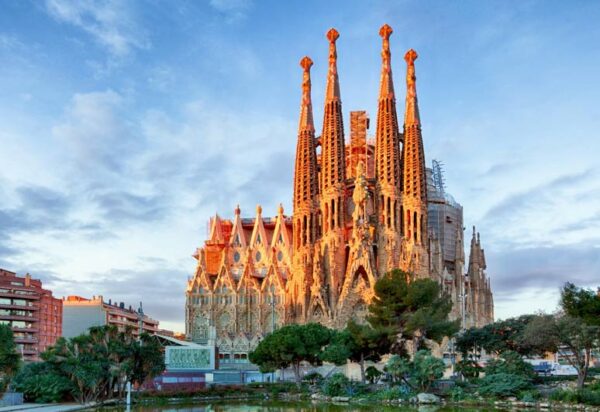
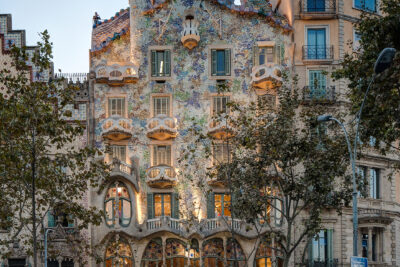
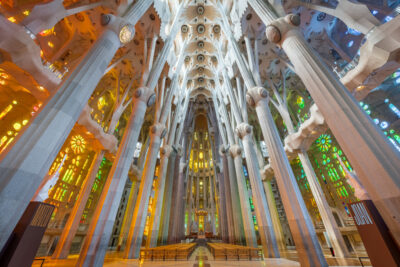
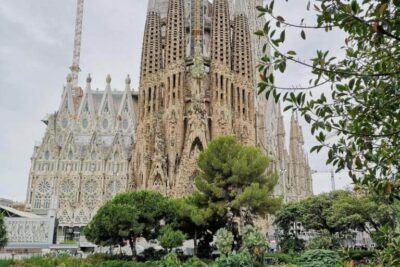
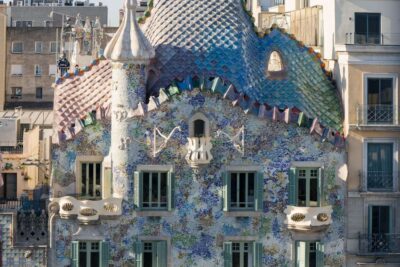
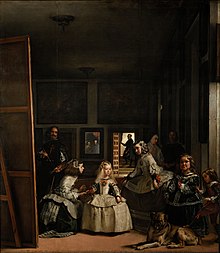
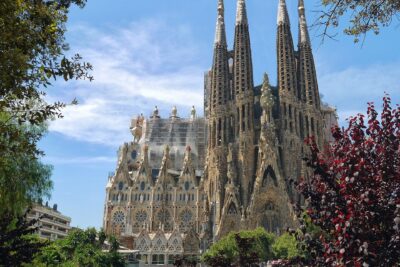
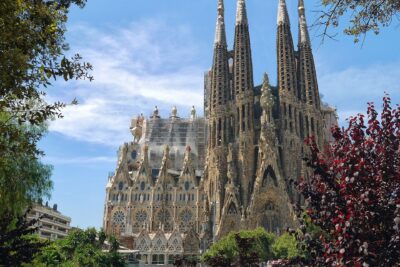
Read more!